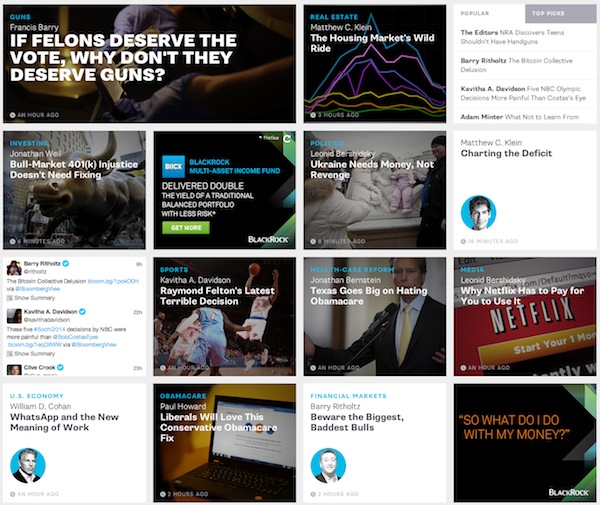I appreciate Rob Meyer writing this post so I didn’t have to: It seems as though every new news site redesign has a common thread: stories presented as uniform rectangles with a text overlay. (Rob’s piece is really about the boxiness, but the text overlay trend is also approaching Defcon 3.) Bloomberg View’s redesign today prompted it, but there are plenty of others: NBC News, MSNBC, Gothamist, the top of The Verge, the “premium” version of The Dallas Morning News, Vocativ, Digg, Digiday, the less-than-loved new Slate, and more.

Today In The Continuing Conquest of The News Web By Uniform Rectangular Images With Text Overlays: http://t.co/b8X5odH4rq
— Joshua Benton (@jbenton) February 25, 2014
Someday soon, we’ll all be turned into rectangled photos with white text and a black semi-translucent box over it http://t.co/uaabauONkY
— Joshua Benton (@jbenton) February 24, 2014
It’s not that boxes are new or anything — the entire web is literally built on them. But it’s a clear trend and, I think at least, a slightly dispiriting one. At the same time we’re seeing increased creativity in article page design, we’re seeing a sort of clotted sameness descend upon front pages and section fronts. It encourages the reader to see everything as just another identical widget of content, I fear. And it, in some cases, limits how much text or other cues one can add to tease a story to the reader. Personally, I find them too scannable and too easily ignorable.
Rob suggests responsive design may be a cause; Ethan Marcotte, the guy who, ya know, invented responsive design says no. Far be it from me to dispute Ethan, but I think responsive has generally led to a regularization of front page chunks in order for them to reflow well on phones. And it fits with the cards metaphor we’re seeing everywhere. (Thanks, Pinterest.) But I think the bigger culprit here is the rise of tablets — both because web designers are taking cues from tablet apps and because tablet traffic is growing as a share of total traffic. What does tablet design prize? Big, tappable areas. It’s a kind of buttonization.